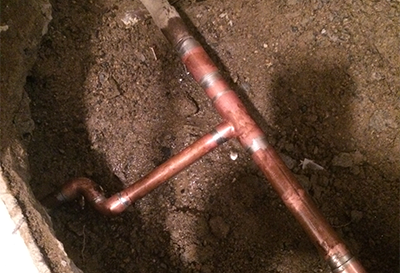Overview To Water Leakage Discovery In Your Home
Overview To Water Leakage Discovery In Your Home
Blog Article
Are you interested in information and facts on Finding hidden leaks?

Early detection of leaking water lines can mitigate a possible disaster. Besides conserving you money, it will minimize the stress as well as frustration. The moment you discover a leak, calling your plumber for repair services is the best option. However, some tiny water leakages may not be visible. Right here are some hacks that help if you can not detect it with your naked eyes.
1. Analyze the Water Meter
Every home has a water meter. Inspecting it is a surefire way that aids you discover leakages. For beginners, shut off all the water resources. Make certain nobody will purge, utilize the faucet, shower, run the washing equipment or dishwasher. From there, most likely to the meter and also watch if it will change. Because no one is using it, there need to be no activities. If it relocates, that indicates a fast-moving leakage. If you find no changes, wait a hr or 2 and inspect back again. This suggests you might have a slow-moving leak that could also be below ground.
2. Check Water Consumption
Analyze your water bills and also track your water usage. As the one paying it, you must notice if there are any disparities. If you identify sudden changes, regardless of your usage being the same, it means that you have leakages in your plumbing system. Keep in mind, your water costs need to drop under the very same range every month. An abrupt spike in your costs shows a fast-moving leakage.
A steady boost every month, also with the exact same behaviors, shows you have a sluggish leak that's additionally gradually intensifying. Call a plumber to extensively examine your residential or commercial property, especially if you feel a warm area on your floor with piping underneath.
3. Do a Food Coloring Test
When it comes to water usage, 30% comes from bathrooms. If the color somehow infiltrates your dish throughout that time without flushing, there's a leakage between the tank and also bowl.
4. Asses Outside Lines
Do not neglect to check your exterior water lines too. Examination spigots by connecting a garden hose. Must water seep out of the connection, you have a loosened rubber gasket. Change this as well as ensure all links are limited. It will certainly aid obtain it professionally analyzed as well as preserved every year if you've got a sprinkler system. One small leak can squander tons of water as well as spike your water costs.
5. Examine the situation and evaluate
Home owners need to make it a habit to check under the sink counters and even inside cabinets for any type of bad odor or mold growth. These 2 warnings indicate a leakage so punctual focus is needed. Doing regular assessments, also bi-annually, can save you from a significant issue.
Check for stainings and also deteriorating as most devices and pipes have a life expectancy. If you presume dripping water lines in your plumbing system, don't wait for it to rise.
Early detection of leaking water lines can reduce a prospective calamity. Some small water leakages might not be visible. Inspecting it is a guaranteed means that aids you find leakages. One small leakage can waste loads of water and surge your water bill.
If you think dripping water lines in your plumbing system, don't wait for it to rise.
WARNING SIGNS OF WATER LEAKAGE BEHIND THE WALL
PERSISTENT MUSTY ODORS
As water slowly drips from a leaky pipe inside the wall, flooring and sheetrock stay damp and develop an odor similar to wet cardboard. It generates a musty smell that can help you find hidden leaks.
MOLD IN UNUSUAL AREAS
Mold usually grows in wet areas like kitchens, baths and laundry rooms. If you spot the stuff on walls or baseboards in other rooms of the house, it’s a good indicator of undetected water leaks.
STAINS THAT GROW
When mold thrives around a leaky pipe, it sometimes takes hold on the inside surface of the affected wall. A growing stain on otherwise clean sheetrock is often your sign of a hidden plumbing problem.
PEELING OR BUBBLING WALLPAPER / PAINT
This clue is easy to miss in rooms that don’t get much use. When you see wallpaper separating along seams or paint bubbling or flaking off the wall, blame sheetrock that stays wet because of an undetected leak.
BUCKLED CEILINGS AND STAINED FLOORS
If ceilings or floors in bathrooms, kitchens or laundry areas develop structural problems, don’t rule out constant damp inside the walls. Wet sheetrock can affect adjacent framing, flooring and ceilings.
https://www.servicemasterbyzaba.com/blog/how-to-detect-water-leakage-in-walls/

We were guided to that editorial about Leaking water lines through a good friend on another site. Sharing is nice. One never knows, you may just be helping someone out. Thanks a lot for your time. Visit us again soon.
Report this page